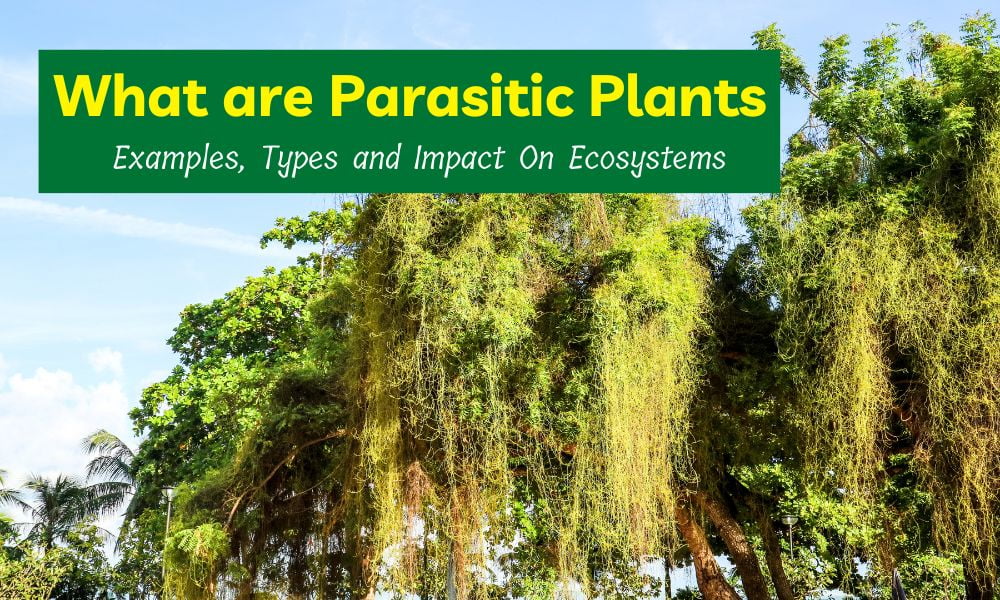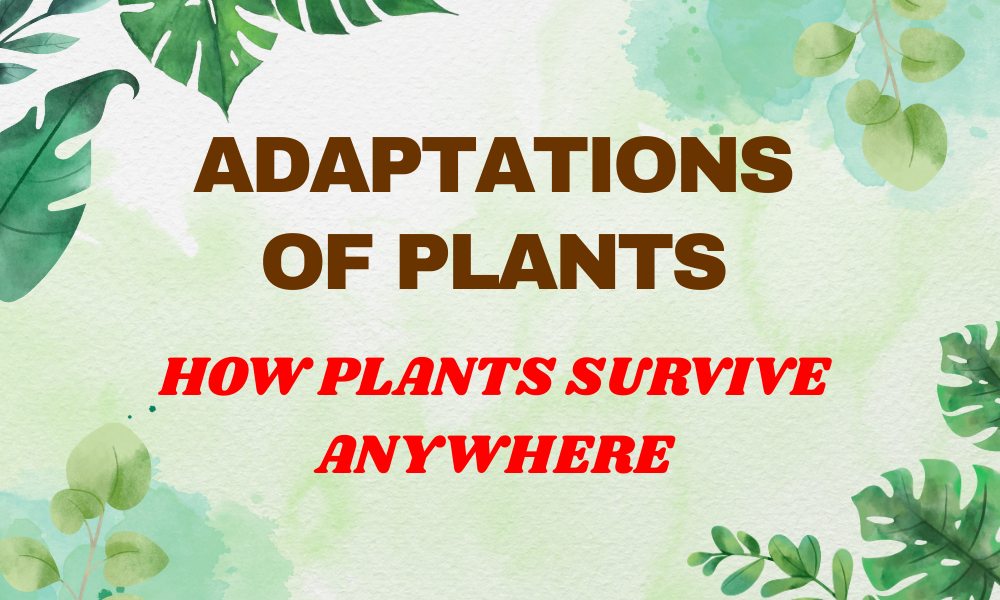Parasitic plants are a unique type of plant that get all or part of their nutrition from another plant, called a host. These plants do not provide any benefit to the host but some parasitic plants also cause great harm to the host. Unlike other plants that make their food by photosynthesis, parasitic plants extract nutrients from their host plants. So in today’s article, we will understand parasitic plants, their examples/types, and their impacts or effects.
What are Parasitic Plants

If you are not familiar with parasitic plant, let me walk you through all the concepts. Parasitic plants are different from other plants because most plants obtain energy or nutrients through photosynthesis but parasitic plant steal it from other plants called host plants. Parasitic relationships can vary in intensity, with some parasitic plants capable of partial photosynthesis while others are completely dependent on their host for nutrients. According to research, only 1% of the approximately 4,000 species of flowering plants are parasitic. These plants have a special structure or part called haustoria that helps them attach to their host plants and take in nutrients, making them unique in the plant kingdom.
Plants such as climbing vines, lianas, epiphytes, and aerophytes are not parasitic plants, although they are supported by other plants. These plants simply use other plants as a structure or support for physical needs or growth, rather than obtaining a direct source of water or nutrients.
(Also Read: 10-Money Making Crops With Low-Investments…)
Examples of Parasitic Plants
- Mistletoe
- Cuscata
- Indian paintbrush (Castilleja)
- Yellow rattle
- Giant padma (Rafflesia arnoldii)
- Striga
- Broomrapes
- Australian Christmas tree (Nuytsia floribunda)
- Ghost plant (Monotropa uniflora)
- Thurber’s stemsucker (Pilostyles thurberi)
Classification/Types of Parasitic Plant

Parasitic plants are mainly of different types like:
- Obligate: An obligate parasite depends on host plants, they cannot complete its life cycle without a host.
- Facultative: A facultative parasite can complete its life cycle independently of the host.
- Stem: A stem parasite plant attaches itself to the host plant’s stem.
- Root: A root parasite attaches itself to the host root.
- Hemiparasites: This type of plant lives as a parasite under natural conditions and is still capable of photosynthesis but depends primarily on its host for additional nutrients such as water and minerals. They are known for their specialized structures called haustoria, which penetrate host plant tissues to extract water and minerals. Examples of hemiparasites include mistletoe (Viscum album) and dodder (Cuscuta species).
- Holoparasites: Holoparasites cannot completely photosynthesize and are completely dependent on their host for sustenance. They often have fewer or absent leaves and a more direct connection to the vascular system of the host plant. Orobanch and Cistanche are examples of holoparasitic plants.
(Also Read: Different Types of Plants In Hindi…)
How Do Parasitic Plant Attach To Other Plants?
Parasitic plants have a special part called haustorium that helps them enter their host plant. This special organ makes a connection between two plants and is how they take in nutrients. Some parasites, such as Rafflesia and Thurber stemsucker, grow inside the host plant and come out only when flowering occurs. While other parasitic plants, such as dodder, establish direct relationships for nutrient extraction and use physical twining to wrap around their hosts.
Impact of Parasitic Plant

- Ecological Impact: Parasitic plants play an important role in ecosystem dynamics. While they can have negative effects on host plants by removing essential nutrients, they also create unique micro-habitats, promoting biodiversity. The ecological balance between parasitic and non-parasitic plants highlights the complex web of interactions within natural systems.
- Impact on Economic and Agricultural: Some parasitic plants pose a threat to agriculture. Species such as Striga, commonly known as witchweed, infest crops such as maize, millet, and sorghum and cause significant yield losses. To control these parasitic plants in agriculture, people use chemical or biological control methods or grow resistant crop varieties.
(Also Read: Best Shrub Plants In India In Hindi…)
Thanks for reading this article where I discussed parasitic plant, their examples, types/classifications, or their impact on ecosystems and agriculture. Share the post with your family and friends and leave a comment related to the topic or post.



























Leave a Reply